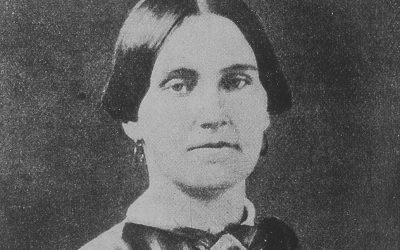On 7 July 1865, Mary Surratt became the first woman to be executed by the U.S. government. Her death was the culmination of a dramatic and controversial trial following one of the most infamous events in American history: the assassination of President Abraham Lincoln. Surratt’s execution sparked intense debate and left a lasting mark on the nation’s legal and moral landscape.
Early life and background
Mary Elizabeth Jenkins Surratt was born in 1823 in Waterloo, Maryland. Raised in a Catholic family, she married John H. Surratt in 1840 and moved to Washington, D.C., where they ran a tavern and later a boarding house. After her husband’s death in 1862, Surratt faced financial difficulties and leased her tavern while continuing to operate her boarding house in the nation’s capital.
The assassination plot
Surratt’s boarding house became the epicentre of John Wilkes Booth’s conspiracy to assassinate President Lincoln. Booth, a famous actor and Confederate sympathiser frequented Surratt’s home, along with other conspirators. The government’s case against Surratt rested on the assertion that her boarding house was a hub for planning the assassination and that she was an active participant in the plot.
On 14 April 1865, Booth fatally shot Lincoln at Ford’s Theatre. Booth’s subsequent escape and the broader conspiracy led to a massive manhunt, culminating in his death and the capture of several co-conspirators. Among those arrested was Mary Surratt.
The trial
The trial of Mary Surratt was conducted by a military commission, a decision that has been criticised for its fairness and adherence to legal norms. The commission, composed of nine Union military officers, heard the case in a highly charged atmosphere of national grief and anger.
The prosecution argued that Surratt had facilitated the conspiracy by providing logistical support, including delivering messages and supplies to Booth and his associates. Witnesses testified that Surratt had met with Booth multiple times and that she had shown complicity through her actions and associations.
Surratt’s defence, led by Reverdy Johnson, a former U.S. Attorney General, argued that the evidence against her was circumstantial and insufficient to prove her guilt beyond a reasonable doubt. Johnson emphasised Surratt’s role as a devout Catholic and widow, painting her as a victim of circumstance rather than a willing participant in a heinous plot.
Execution and aftermath
Despite the defence’s efforts, the military commission found Mary Surratt guilty. She was sentenced to death, along with three other conspirators: Lewis Powell, David Herold, and George Atzerodt. Appeals for clemency, including a petition signed by five of the nine commissioners, were denied by President Andrew Johnson.
On 7 July 1865, Mary Surratt was hanged at the Old Arsenal Penitentiary in Washington, D.C. Her execution was witnessed by a large crowd and remains a subject of historical controversy. Surratt maintained her innocence until the end, and her death raised questions about the use of military tribunals for civilians and the treatment of women in the justice system.
Mary Surratt’s execution is a complex and contentious chapter in American history. It highlights the intense emotions and political pressures of the post-Civil War era and raises questions about justice, gender, and the rule of law. Her story reflects the broader challenges of balancing security and fairness in times of national crisis.






Leave a Reply